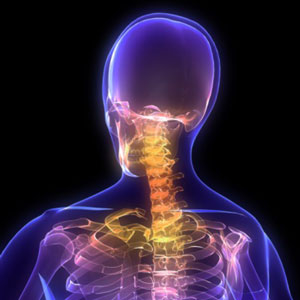 Ergonomics – we hear that word all the time and most of us ignore it almost as often.
Ergonomics – we hear that word all the time and most of us ignore it almost as often.
Which, to be frank, is one of the most common reasons why people have to see a Chiropractor.
Long hours at a desk or huddled over a handheld device do unpleasant things to our bodies. There are the obvious signs of physical stress, like a little eye fatigue or muscle stiffness that we shrug off and soon forget. But it’s the long-term cumulative effects that are less obvious on a day-to-day basis that you need to worry about.
Little things add up over time. By the same token, incremental changes can make a big difference in your health. As the Ontario Ministry of Labour and the Canada Standards Association (CSA Group) put it, it’s about many small adjustments to your work setup – to the position of your head, shoulders, arms, back, hips, and legs.
Back in September, we cited the case of one Kanata-area family, a 10-year-old boy and his 42-year-old mother. Both had an almost identical loss of the natural curve in their necks. The only obvious factor to account for this condition in the boy was his hours a day hunched over an iPad. His mother had years of time over her computer and sewing machine.
What they had in common was the same poor ergonomic habits. The good news for the boy is that kids tend to bounce back fast when they receive the right care. Within a few months, he had seen substantial improvement versus his mother with the same treatment program.
But the key is to avoid the need for care in the first place – by reforming those poor ergonomic habits. Conditions like arthritic degeneration of the discs and vertebrae in your spine or carpal tunnel syndrome may all be prevented with the right habits.
What to do at the desk
There is plenty of info out there to help you adjust your workstation. Here is a helpful list from the Ontario Ministry of Labour website (more information on the negative effects of a poorly adjusted workstation can be found there):
- The monitor should be set at a height so that your neck will be straight.
- Your elbow joints should be at about 90 degrees, with the arms hanging naturally at your sides.
- Keep your hands in line with your forearms, so the wrists are straight, not bending up, down or to either side.
- Thighs should be roughly parallel to the floor, with your feet flat on the floor or footrest.
- If necessary, use a footrest to support your feet.
- Your chair should be fully adjustable, for seat height, backrest height, and seat pan tilt, and, preferably, armrests, too. It should have a well-formed lumbar (lower back) support to help maintain the lumbar curve of your spine.
- There should be enough space to use the mouse. Use a wrist rest or armrest so that your wrist is straight and your arm muscles are not overworked.
- Use an adjustable document holder to hold source documents at the same height, angle, and distance as the monitor.
- In addition, take breaks. They need not be lengthy – just one or two minutes every half hour, to stretch and rotate your joints.
What about those handheld devices?
Tablets and smartphones encourage worse ergonomic habits than a keyboard on a desk. So does a laptop, if you are using it on your lap – stick with a table or desk. It’s very easy to slouch into that turtle posture, with head bent forward and back hunched. Even when standing with a device, the natural inclination is to bend the head with chin to chest.
Here’s what to do:
- Keep your head up and in a neutral position as much as possible, with shoulders back and elbows relaxed below your shoulders.
- If doing a lot of texting, write fewer and shorter messages, use dictation software if possible, and don’t type for more than a few minutes at a time.
- With heavier tablets, regularly change your grip position to rotate the stress load on your hands and wrists.
- Again, take breaks, and stretch out your hands, fingers, and wrists.
Here is a great tip sheet that covers these points and more with helpful illustrations.
